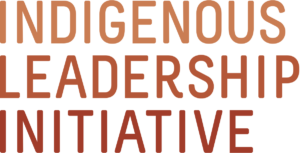Dehcho First Nations Create Indigenous Protected Area & Bring Canada Closer to Conservation Goal
By Valérie Courtois
A sweeping stretch of black spruce, headwater lakes and caribou grounds west of Yellowknife has gained new protections thanks to the leadership of the Dehcho First Nations. The Dehcho passed a Dene law to create the Edéhzhíe Protected Area in July. And this week, Dehcho leaders held a signing ceremony with Environment Minister Catherine McKenna to designate it as a joint Dehcho Protected Area and National Wildlife Area.
Now more than 14,200 square kilometres of boreal forest lands and waters will be protected for the Dehcho people and all Canadians.
Credit: Environment and Climate Change Canada, 2016
This marks the first Indigenous protected area established since Canada laid out its pathway process to protect at least 17% of lands and freshwaters by 2020. Edéhzhíe brings Canada closer to that goal. Many other Indigenous Nations are working to create their own Indigenous protected areas, ensuring more caribou, moose, medicinal plants, water and other values thrive into the future.
“It’s an empowering story, and it’s not just empowering for First Nations Peoples. It’s empowering for everyone,” said Dahti Tsetso who directs the Dehcho K’éhodi Indigenous Guardians program.
The Dehcho First Nations have worked for over 20 years to conserve Edéhzhíe to honour their cultural responsibility to the land. At the signing ceremony, elders said Edéhzhíe is known as the breadbasket of the Dehcho because it sustains plentiful caribou, moose, fish, and waterfowl. Even when game was scarce in the Mackenzie Valley, the Dehcho knew they could find food in the forests, wetlands and lakes of Edéhzhíe.
These places hold great significance for Dehcho culture and identity and conserving them will sustain the Dehcho way of life in Edéhzhíe for current and future generations.
The new protected area will be managed through a partnership between the Canadian Wildlife Service and the Dehcho K’ehodi Indigenous Guardians. Indigenous guardians are the “moccasins and mukluks” or the Nation’s “eyes and ears” on the ground. They are skilled in traditional knowledge and cultural protocols around caring for the land, and they are trained in western science. Researchers looking at the Dehcho K’éhodi and another Indigenous guardians program in the NWT found that they generate $2.50 in social, economic, cultural, and environmental value for every dollar invested.
Dahti Tsetso explained “we have a saying that guides the program: ‘Being on the land in the Dene way will protect the land.’ It’s coming from the recognition that, as Dene people, we’ve been on the land since time immemorial, and we’ve always taken care of that land and taken care of each other according to our Dene laws. We just need to keep doing that.”
The Dene are not alone. I’ve visited Indigenous communities and Nations across what is now known as Canada that are conserving land using cultural protocols and laws, and innovative tools. From Déline, to Misipawistik, to Eeyou Istchee, many are proposing new Indigenous protected areas that sustain cultural practices and protocols for communities and preserve animals, plants, carbon storehouses, and clean waters for all people.
Environment and Climate Change Canada
These Indigenous Nations are ready to partner with Canada on the goal of protecting at least 17% of lands and freshwaters by 2020.
Canada committed to that goal in 2015 as part of the global effort to combat the alarming rate of extinction among animals and plants. Indigenous Peoples witness these declines firsthand: My Nation, the Innu, who are caribou people, have witnessed in my own lifetime the George River Herd drop from over 800,000 in the early 90s to fewer than 5,500 today.
Protecting places like Edéhzhíe offers our best chance of sustaining caribou and other animals for generations to come. Indigenous Peoples are driving many of these gains. Crown governments working to recognize the leadership of Indigenous Peoples and respond to Indigenous-led designations with their own legal tools can help Canada become a leader in international conservation.
As Dehcho elder Jonas Antoine said of Edéhzhíe, “It will be a gift for the future.”




